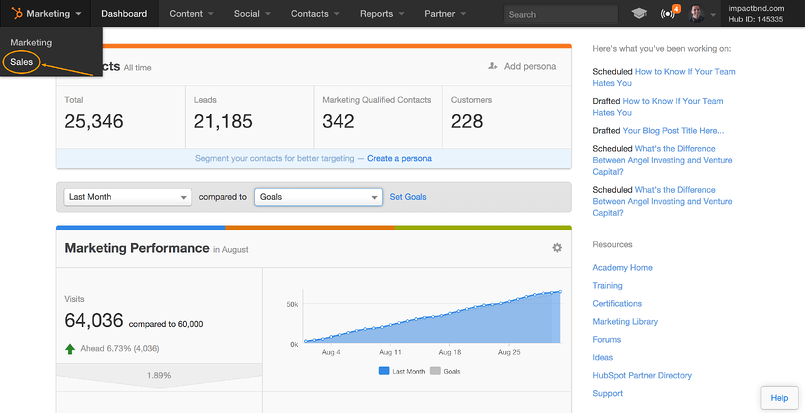Subscribe now and get the latest podcast releases delivered straight to your inbox.
 Eight years ago HubSpot changed the way we all think about marketing.
Eight years ago HubSpot changed the way we all think about marketing.
All it took was two friends with a dream, a common frustration, and the determination to combine the two. The result was the most comprehensive solution to digital marketing SMBs had ever experienced.
Suddenly, after a while of course, it wasn’t so hard to generation attention anymore. Companies started blogging. Then even more companies started blogging.
People started to understand that social media wasn't just a place to dump repurposed print ads. They started building real time relationships in a way that was never possible.
They started attracting people instead of spending tons of cash trying to find them. Most importantly, they started generating leads.
Lots of them.
And that’s where things got tricky.
Marketing evolved, but sales didn’t.
As traffic and leads accumulated, organizational conversations shifted from, “how do we attract people” to “how do we close them?”
Most of this trepidation came from the system itself. When it came to inbound selling, there was a lot that was seen as “taboo.” After all, one of its trademarks is in being non-interruptive.
So how do we sell? Should we wait for people to call us? To request a consultation or demo?
Should we hit them with a barrage of emails? Do nothing?
Now what?
While many organizations use a CRM of some variety, whether it’s SalesForce or otherwise, from experience I can tell you there are still many that don’t. Or at best, a CRM is in place, but grossly unorganized and really not doing anything to supplement their inbound marketing efforts.
This can be due to any number of reasons, including just not having the time to master the intricacies of following up with online leads.
Just like in 2006, HubSpot saw this common frustration. And just like right years ago, they’re looking to solve it.
HubSpot unveiled their own CRM tool yesterday, aiming to help marketers nurture and close all of these leads they’re now generating through their website and other online assets.
In typical fashion, HubSpot’s solution simplifies everything. The interface is designed in such a way that’s impressively easy to use, a stark contrast from the CRMs you’re used to.
Manual tasks are made automated. Everything syncs. (You can even make phone calls directly from your desktop.)
Oh, and there’s really no integration to worry about, as it’s an extension of the marketing software you’ve come to know.

Now I’m not going to get into all of the features and specs here, but rather what this all means for you as a fellow HubSpotter.
Marketing and sales should no longer be operating in the silos in which they previously were. Sure, we’ve all talked about sales and marketing alignment ad nauseam, but this is different.
Both departments should, and are more equipped than ever, to work together as a unit.
Marketing should never feel comfortable sitting on a pile of leads at the end of the month thinking, “well, we did our job.”
Both teams should be functioning as one unit to achieve organizational goals. Everyone is accountable.
HubSpot CRM offers agencies a solution to finally bridge the gap in a way that makes more sense.
Interested in learning more about the HubSpot CRM? Click here.


Order Your Copy of Marcus Sheridan's New Book — Endless Customers!

